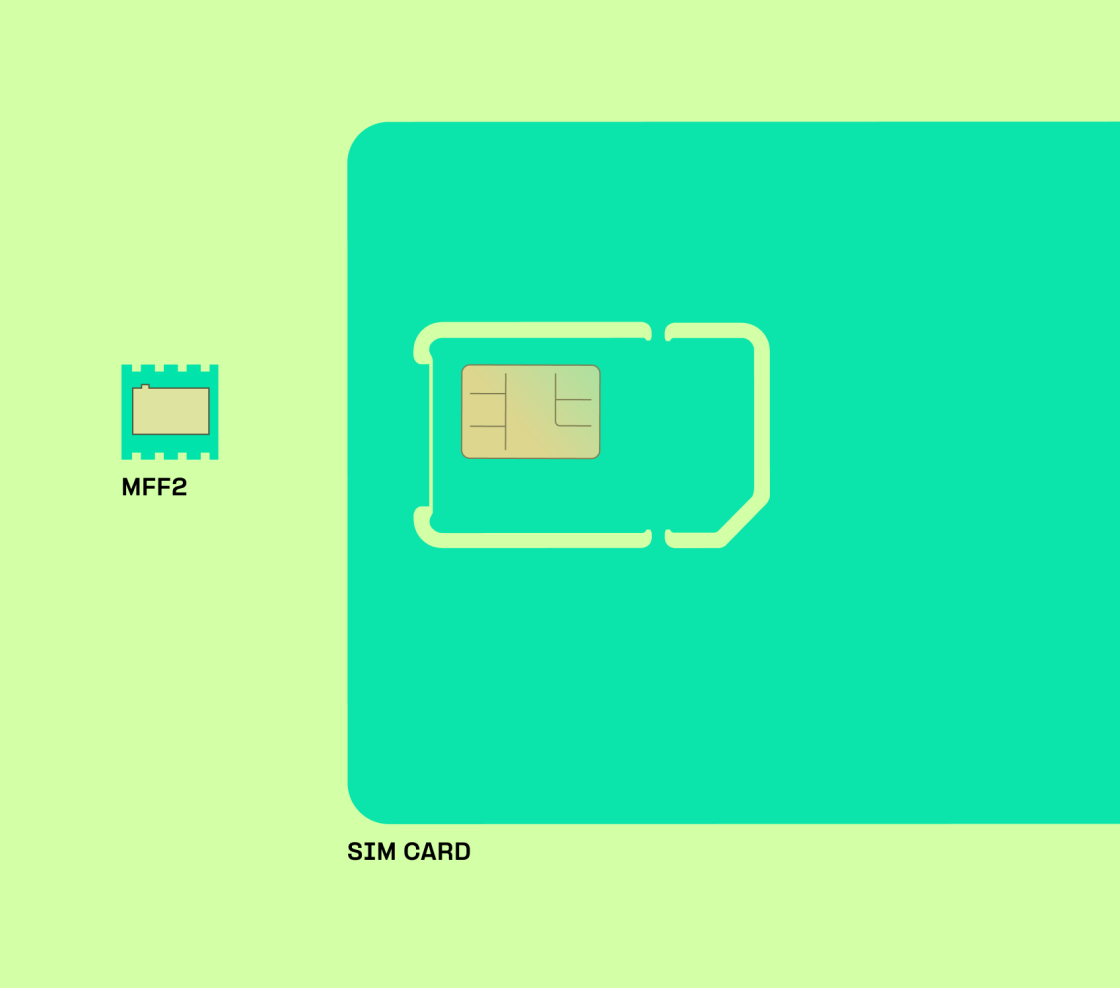IoT Connectivity Managementplatform Best IoT Connectivity Management Software
The evolution of smart homes has remodeled the way we work together with our dwelling spaces. At the core of this transformation lies the need for efficient IoT connectivity options. These options integrate various devices, enabling seamless communication and automation, making life extra handy and environment friendly.
IoT, or the Internet of Things, refers to the interconnected community of units that communicate over the web. For smart properties, this implies appliances, security methods, heating and cooling models, and even lighting may be managed remotely and work along side one another. Selecting one of the best IoT connectivity solutions is thus essential for making certain optimal performance and a cohesive smart home expertise.
Connectivity Management IoT Simplifying Global IoT Connectivity with eSIM
Firstly, Wi-Fi remains a dominant alternative for connecting smart home gadgets. Its widespread availability and compatibility with nearly all smart devices make it an accessible option. High-speed internet connections enhance the functionality of smart devices, allowing them to operate smoothly. However, because the number of units in a house will increase, competition for bandwidth may lead to connectivity points.
Zigbee is another distinguished connectivity solution, particularly favored for its low power consumption and mesh networking capabilities. This protocol allows units to communicate with one another instantly, enhancing reliability and range. Zigbee units form a mesh community, which means that they will relay messages to and from one another. This is particularly helpful for bigger properties the place Wi-Fi signals would possibly battle to cowl every area.
Connectivity Management Platform IoT Power of Connectivity in IoT
Z-Wave serves as a substitute for Zigbee with similar benefits however some distinct differences. Z-Wave’s give consideration to residence automation ensures that units from varied manufacturers can coalesce right into a unified network. The know-how is designed primarily for smart home gadgets, making it highly specialised. Moreover, while Zigbee operates on the two.4 GHz frequency, Z-Wave makes use of lower frequencies, which may provide better penetration through partitions and different obstacles.
Bluetooth is commonly used for short-range device communication. Its low energy consumption is good for gadgets that don't require steady connectivity. Many smart home merchandise, similar to smart audio system and lights, make the most of Bluetooth, allowing for easy pairing and use. However, its limitations in vary mean it's usually not appropriate as a spine for an entire smart residence system.
LPWAN, quick for Low Power Wide Area Network, caters to units that require long-range communication while consuming much less power. Technologies like LoRa and Sigfox fall beneath this category. These networks are significantly advantageous for sensors and units spread out over large areas. In smart houses, they can be utilized for environmental monitoring techniques that monitor temperature, humidity, or air quality.
Managed IoT Connectivity Best Practices for IoT Network Design
Cellular networks provide another option for connecting smart gadgets, particularly in areas where Wi-Fi isn’t reliable. Cellular know-how permits gadgets to attach directly to cell networks, which could be beneficial for homes in remote places. While usually costlier than other choices, the reliability and coverage of cellular networks make it a worthy consideration.
The integration of multiple connectivity options is vital for reaching an adaptable smart home. A hybrid system that combines Wi-Fi, Zigbee, Z-Wave, and Bluetooth can effectively address varied wants inside a wise residence. This strategy ensures that gadgets can communicate successfully, regardless of their individual necessities or limitations.
Security ought to be a main concern when deciding on IoT connectivity options. Each protocol comes with its personal set of vulnerabilities, and as smart houses turn out to be extra prevalent, the potential for cyber threats increases. Manufacturers prioritize securing connections through encryption and common updates, but customers must additionally take proactive measures, corresponding to altering default passwords and establishing two-factor authentication.

Interoperability stays a major challenge in the house of smart house connectivity. Different manufacturers typically use proprietary technologies, leading to compatibility issues. Solutions that prioritize open standards are increasingly preferred, as they allow for seamless integration of devices from numerous manufacturers. This flexibility enables consumers to customise their smart house methods without being locked right into a single brand.
IoT Cloud Connectivity Platform for IoT Connectivity Management
In addition to enhancing connectivity between gadgets, IoT options should additionally focus on person experiences. The management interfaces provided by manufacturers, whether through mobile apps or internet platforms, ought to be intuitive and user-friendly. Consumers ought to be able to easily manage and automate their units with out intensive training or technical know-how.
Cloud-based options are an indispensable component of recent smart homes. They present centralized administration, information analytics, and remote access capabilities. By utilizing cloud companies, customers can control their smart properties from anywhere on the earth. This is particularly useful for safety monitoring and adjusting house settings while away, making certain peace of thoughts.
As smart residence technology continues to evolve, it holds the potential to considerably cut back energy consumption. IoT devices could be programmed to function throughout off-peak hours or modify settings primarily based on real-time information, similar to electricity charges. This not solely reduces prices for homeowners but additionally contributes positively to environmental sustainability.
IoT Connectivity Management Platform Definition of IoT Connectivity
Looking into the lengthy run, the demand for extra superior and environment friendly IoT connectivity solutions will only grow. As consumer consciousness and adoption of smart technologies increase, the main focus will shift in direction of creating more integrated ecosystems. Innovations like artificial intelligence and machine studying can additional improve the click to find out more functionality of smart houses, enabling gadgets to be taught person preferences and automate processes dynamically.
The growth of 5G expertise is about to revolutionize smart residence connectivity. Its larger speeds and lower latency can broaden the chances for real-time data transmission and management. With this advancement, gadgets can communicate instantaneously, paving the best way for extra complicated and interdependent methods.

In conclusion, as the landscape of smart houses continues to broaden, exploring the best IoT connectivity options turns into crucial. Each technology provides unique advantages and challenges, and the optimum resolution often involves a mix of several. Understanding the nuances of each protocol permits owners to create techniques tailor-made to their particular needs, ultimately leading to extra efficient, safe, and gratifying living areas.
- Wide Area Networks (WAN) facilitate long-range connectivity, making certain that smart devices communicate successfully across bigger properties or neighborhoods.
- Low Power Wide Area Networks (LPWAN) are excellent for connecting battery-operated gadgets, offering extended battery life and longer transmission distances while maintaining low prices.
- Wi-Fi 6 technology enhances smart house methods' effectivity by supporting multiple gadgets concurrently, guaranteeing seamless connectivity without latency issues.
- Bluetooth Mesh Networks improve the vary of Bluetooth units, permitting for a extremely efficient communication network among smart units throughout the house.
- Zigbee is an energy-efficient protocol designed specifically for smart home units, providing robust security measures and simple integration with various platforms.
- Thread technology creates a scalable, resilient network for connected gadgets, ensuring low power consumption while additionally supporting direct, safe communication.
- Cellular IoT solutions provide reliable connectivity without depending on local infrastructure, making them invaluable for distant monitoring and control of smart residence units.
- Satellite connectivity can serve areas with restricted ground community coverage, facilitating smart house solutions in rural or isolated regions.
- Hybrid connectivity approaches combine multiple technologies to make sure uninterrupted service, optimizing performance primarily based on the house's particular necessities and layout.
- Edge computing capabilities in smart home ecosystems enhance information processing pace and cut back latency, permitting for smarter and more responsive gadget interactions.undefinedWhat are the top IoT connectivity solutions obtainable for smart homes?
IoT Connectivity Policy Essential Types of IoT Connectivity

The finest IoT connectivity options for smart properties embody Wi-Fi, Zigbee, Z-Wave, Thread, and LoRa. Each of these technologies offers distinctive advantages relying on elements like range, energy consumption, and system compatibility.
How do I select the most effective connectivity resolution for my smart house devices?
Cellular Connectivity Providers For IoT Providers of Cellular IoT Connectivity
Consider elements like the forms of devices you have to connect, the range required, and energy consumption. Wi-Fi is often best for high-bandwidth functions, whereas Zigbee and Z-Wave are ideal for low-power units over short distances.
Is Wi-Fi a great possibility for all smart residence devices?
Connectivity Management IoT M2M Connectivity Solutions in IoT
While Wi-Fi provides high bandwidth, it might possibly consume extra power and may not be suitable for all low-power IoT gadgets (Vodafone Managed IoT Connectivity Platform). For smaller units like sensors, Zigbee or Z-Wave can be more efficient.
What is the distinction between Zigbee and Z-Wave?
Zigbee operates on 2.4 GHz and has a bigger variety of suitable devices, while Z-Wave uses sub-GHz frequencies, allowing for higher penetration via walls. Both are nice for low-power, low-bandwidth functions.
Cellular Connectivity Providers For IoT Enabling Internet of Things Connectivity
Can I integrate a quantity of connectivity solutions in my smart home?
Yes, many smart residence ecosystems permit integration managed iot connectivity of multiple protocols. Using a smart hub may help handle devices that function on different connectivity standards seamlessly.
Connectivity Technologies In IoT Future of IoT Technology Connectivity
How secure are these IoT connectivity solutions?
Security ranges differ by technology. Zigbee and Z-Wave use encryption to safe information transmission, while Wi-Fi safety is dependent upon your router settings. Regularly updating firmware can help improve security for all gadgets.
Connectivity Management Platform IoT Connection Types and IoT Devices Overview
What is the role of a sensible hub in IoT connectivity?
- Connectivity Of IoT
A smart hub centralizes management of various smart house units, allowing them to communicate and work collectively even when they use completely different connectivity protocols. It simplifies automation and management.
Are there any prices related to implementing these solutions?
Internet Connectivity Principles In IoT SIM Card Solutions for IoT Connectivity
Costs can differ significantly based on the expertise chosen and the variety of units. Initial setup costs may embrace purchasing suitable devices, smart hubs, and ongoing energy expenses.
How do I ensure my gadgets stay suitable as expertise evolves?
Opt for units that observe open standards and are frequently up to date. Using a extensively known brand or a smart home platform that prioritizes compatibility can also help scale back future compatibility points.